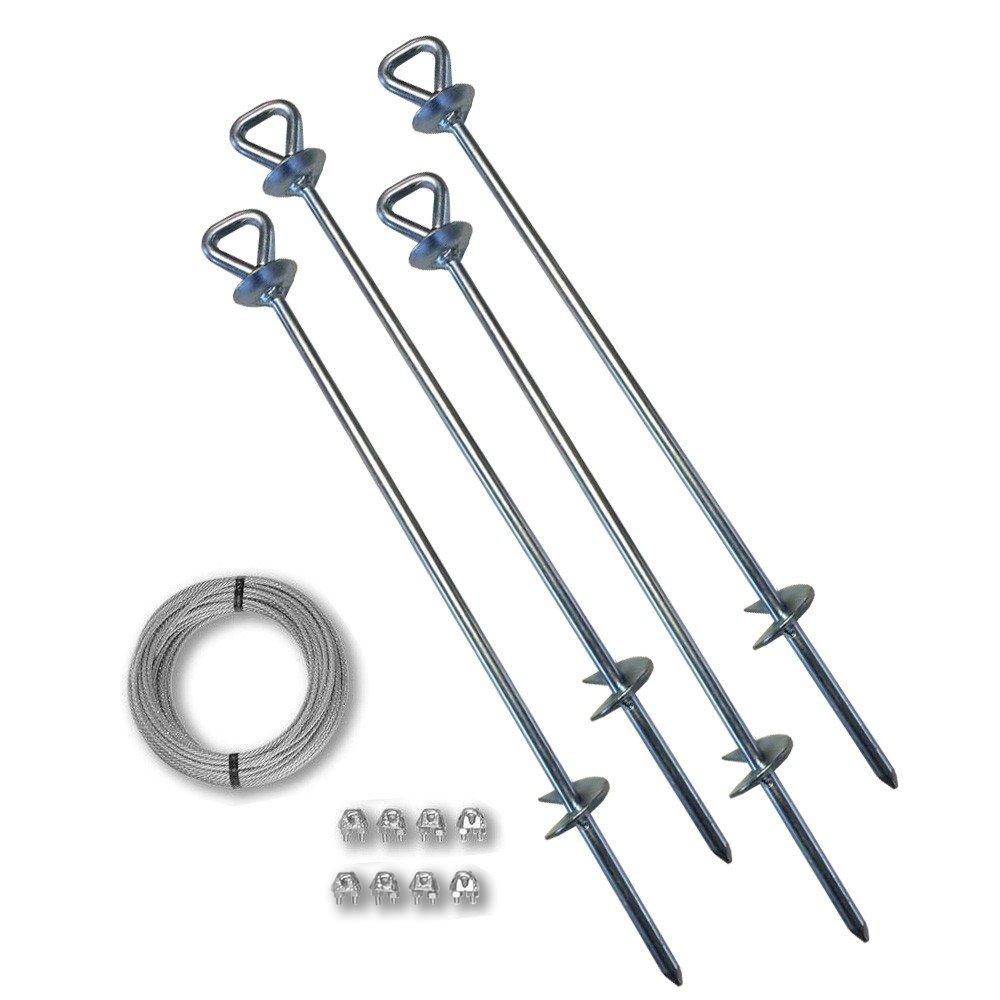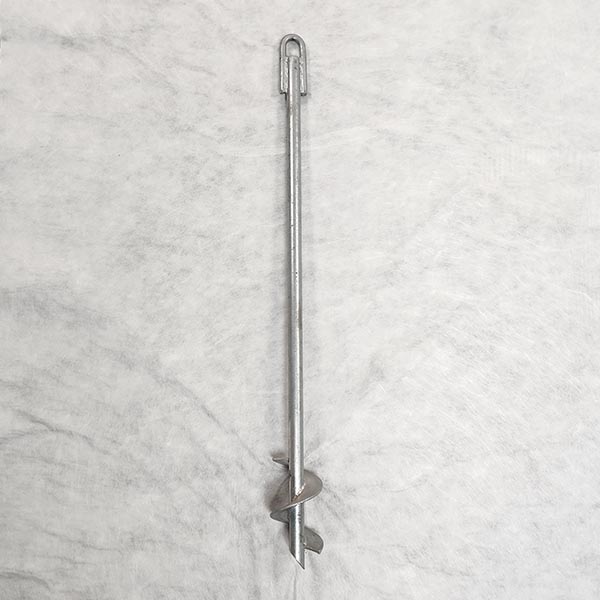Just How Heavy-Duty Earth Anchors Job: A Comprehensive Guide to Soil Anchoring Solutions
Heavy-duty Earth anchors play a crucial duty in supplying security and assistance in different building and construction applications. By installing deeply right into the ground, they resist vertical and side pressures properly. Various kinds of anchors satisfy numerous soil conditions, making them versatile. Recognizing their auto mechanics and installation strategies is necessary for maximizing performance. What aspects affect their effectiveness, and just how do they compare to standard approaches? The responses might stun you.
Comprehending Durable Earth Anchors
Sturdy Earth anchors act as necessary components in various building and construction and landscape design jobs, providing stability and support in challenging dirt conditions. These supports function by being installed into the ground, where they stand up to upright and side forces. Their design permits secure accessory to frameworks, ensuring they continue to be anchored against soil motion or external loads.The effectiveness of heavy-duty Earth supports mainly relies on the sort of dirt and the anchor's installation depth. Correct installation techniques are important, as they identify the support's holding ability. Ecological elements, such as moisture and freeze-thaw cycles, can also influence performance.These supports are frequently used in applications varying from safeguarding fences and retaining wall surfaces to supporting short-lived frameworks throughout damaging climate problems. Recognizing the concepts behind sturdy Earth supports is necessary for specialists seeking to boost the resilience and safety and security of their tasks.
Sorts Of Heavy-Duty Earth Anchors
Numerous kinds of heavy-duty Earth supports are designed to satisfy details needs based upon dirt conditions and project needs. Helical anchors, including screw-like blades, are effective in softer soils, offering high lots capabilities and simple installment. Driven anchors, which are inculcated the ground, are ideal for rocky surfaces and supply instant load support. Tie-back anchors are typically utilized in keeping wall surface applications, allowing for lateral assistance by anchoring into the ground at an angle. An additional kind is the cast-in-place support, ideal for concrete applications, as they are incorporated into structures for enhanced stability. Lastly, soil screw anchors are functional options that can be made use of in different soil kinds, providing dependable stress and compression capacities. Each type offers distinct applications, guaranteeing security and safety and security in construction and landscape design projects. Comprehending these choices permits informed choices in choosing the proper Earth securing remedy.
The Mechanics of Dirt Anchoring

Comprehending the auto mechanics of dirt anchoring needs an examination of numerous types of Earth anchors and their installation techniques. Each support type provides unique qualities that affect its effectiveness in different dirt problems. Correct installment approaches are essential for optimizing the securing system's stability and efficiency.
Sorts Of Earth Anchors
Earth anchors, essential parts in soil anchoring systems, can be found in a number of kinds, each made for certain applications and soil conditions. One of the most usual types consist of screw supports, which are twisted into the ground, giving solid lateral resistance. Helical supports feature blades that permit reliable installment in various soil kinds, making them appropriate for both permanent and temporary applications. Driven supports, normally made from steel, are inculcated the dirt and work in rocky or thick settings. Auger anchors use a helical style to assist in installment in softer dirts. Plate anchors consist of a level plate buried flat, distributing lots over a larger area, ideal for applications requiring high tons capacities in natural dirts.
Installation Techniques Explained
Proper setup techniques are crucial for the effectiveness of soil anchoring systems. The procedure usually starts with site evaluation, validating the chosen place can support the anchor's load. After determining the correct anchor type, correct hole depth and angle must be developed. The setup entails driving the anchor into the ground utilizing specific equipment, such as hydraulic or manual vehicle drivers, to attain best embedment. Post-installation, tensioning the anchor is vital to guarantee stability; this is frequently validated with load testing. In addition, bordering dirt problems need to be kept track of to prevent variation. Adhering to these strategies not just improves the support's performance however likewise extends its life-span, giving reliable assistance for various applications.
Applications of Heavy-Duty Earth Anchors
While heavy-duty Earth anchors are frequently connected with building and landscaping, their convenience encompasses a range of applications across various markets. In civil engineering, they offer necessary support for maintaining wall surfaces, making certain stability in locations susceptible to dirt disintegration. The aquatic field makes use of these anchors for securing anchors and marinas, avoiding movement brought on by trends and currents. Additionally, in the telecom sector, durable Earth supports are considerable for maintaining cell towers and various other high frameworks versus wind pressures. Agricultural applications likewise profit, as these supports can secure structures like greenhouses and animals fencing, guaranteeing they withstand severe weather. Additionally, in renewable resource tasks, such as wind farms, Earth supports play a crucial role in protecting generator foundations, enhancing overall safety and efficiency. This wide series of applications highlights the adaptability and integrity of sturdy Earth supports throughout different areas.
Benefits Over Typical Anchoring Techniques
Although standard anchoring approaches have long been relied upon for stability, sturdy Earth anchors use significant benefits that improve performance and effectiveness. One major benefit is their premium load-bearing capability, which enables them to stand up to better forces without failing. This toughness makes them perfect for demanding applications, such as in building and construction and utility installations.Additionally, sturdy Earth anchors are created for much deeper setup, offering better security in different soil problems, consisting of loose or sandy soils. Their resistance to deterioration and environmental variables assures a much longer life expectancy and lowered maintenance prices contrasted to traditional methods.Moreover, these supports can be set up with very little disturbance to the surrounding location, protecting the honesty of the landscape. Generally, sturdy Earth supports present a effective and dependable remedy for anchoring requirements, going beyond the limitations typically related to traditional anchoring techniques.
Setup Refine and Best Practices
The installment process for dirt securing services starts with extensive prep work and website evaluation to guarantee peak performance. Following this, a detailed installment guide provides clear description instructions for effective implementation (Manta Ray anchors). Adhering to these finest methods is important for achieving trustworthy and durable anchoring outcomes
Prep Work and Website Assessment
Efficient prep work and detailed website assessment are essential steps in the installment of soil anchoring options. Prior to installation, the dirt kind should be analyzed to determine its bearing capacity and viability for securing. Conducting a geotechnical survey can give important info about soil make-up, moisture levels, and prospective ground motion. Furthermore, recognizing existing frameworks, plant life, and energies is essential to avoid disturbance throughout installation. The area ought to be free from particles and obstacles to guarantee secure accessibility for devices. Climate condition must also be checked, as unfavorable conditions can influence both security and installment effectiveness. By meticulously preparing the website and examining all pertinent elements, the probability of effective support efficiency is substantially enhanced.
Step-by-Step Installment Guide
A thorough setup process is essential for achieving suitable performance of dirt anchoring services. The setup begins with picking the proper support type and ensuring the site is clear of particles. Next, correct opening placement is identified based upon lots needs. Once the area is developed, openings are pierced to the specified deepness and diameter utilizing the right devices. The support is then put into the hole, seeing to it it is straightened correctly. After safeguarding the anchor, dirt is backfilled and compressed to improve stability. It is vital to follow maker standards throughout the procedure. A post-installation evaluation confirms that the supports are sufficiently located and operating as intended, supplying dependable assistance for the intended application.

Maintenance and Assessment of Earth Anchors
Routine you can try these out upkeep and evaluation of Earth anchors are necessary for guaranteeing lasting performance and stability. Periodic checks permit the very early detection of concerns such as rust, loosening, or soil motion. Assessors need to try to find indicators of rust or degradation on the support components, particularly at the connection factors. Additionally, the surrounding dirt must be examined for erosion or adjustments in moisture material, which can affect anchor effectiveness.It is recommended to establish a regular evaluation routine, ideally at the very least when a year, depending upon environmental conditions. During evaluations, all visible elements must be cleansed to get rid of dust or debris that can conceal prospective troubles. Any type of indicators of distress, such as turning structures or unusual settling, must trigger immediate assessment. Proper documentation of assessments can assist in tracking anchor performance over time and facilitate timely upkeep actions, guaranteeing the supports remain trustworthy and functional.
Regularly Asked Concerns
What Products Are Heavy-Duty Earth Anchors Generally Made From?
Sturdy Earth anchors are normally built from durable products such as galvanized steel or stainless steel, guaranteeing strength and resistance to corrosion. These products supply durable support and security in different dirt conditions and applications.
Just How Do Soil Conditions Impact Support Efficiency?
Dirt problems considerably influence support efficiency. Factors such as dirt kind, dampness material, and compaction influence the anchor's grasp and security, with natural dirts usually providing much better resistance than loosened or sandy dirts, impacting general effectiveness.
Can Heavy-Duty Earth Anchors Be Reused After Removal?
Sturdy Earth supports can be reused after removal, offered they are examined for damage and wear. Proper cleaning and maintenance enhance their read this post here durability, making sure effective performance in subsequent setups when conditions enable safe reinstallation.
What Are the Environmental Impacts of Utilizing Earth Anchors?
The environmental effects of utilizing Earth supports include prospective dirt disruption, disruption of regional ecological communities, and possible contamination of groundwater. Nonetheless, if utilized properly, their advantages often outweigh these concerns, advertising stability in numerous applications.
Just how Do I Choose the Right Support for My Task?

Comments on “How Professionals Handle the Installation of heavy-duty earth anchors in Unstable Soil”